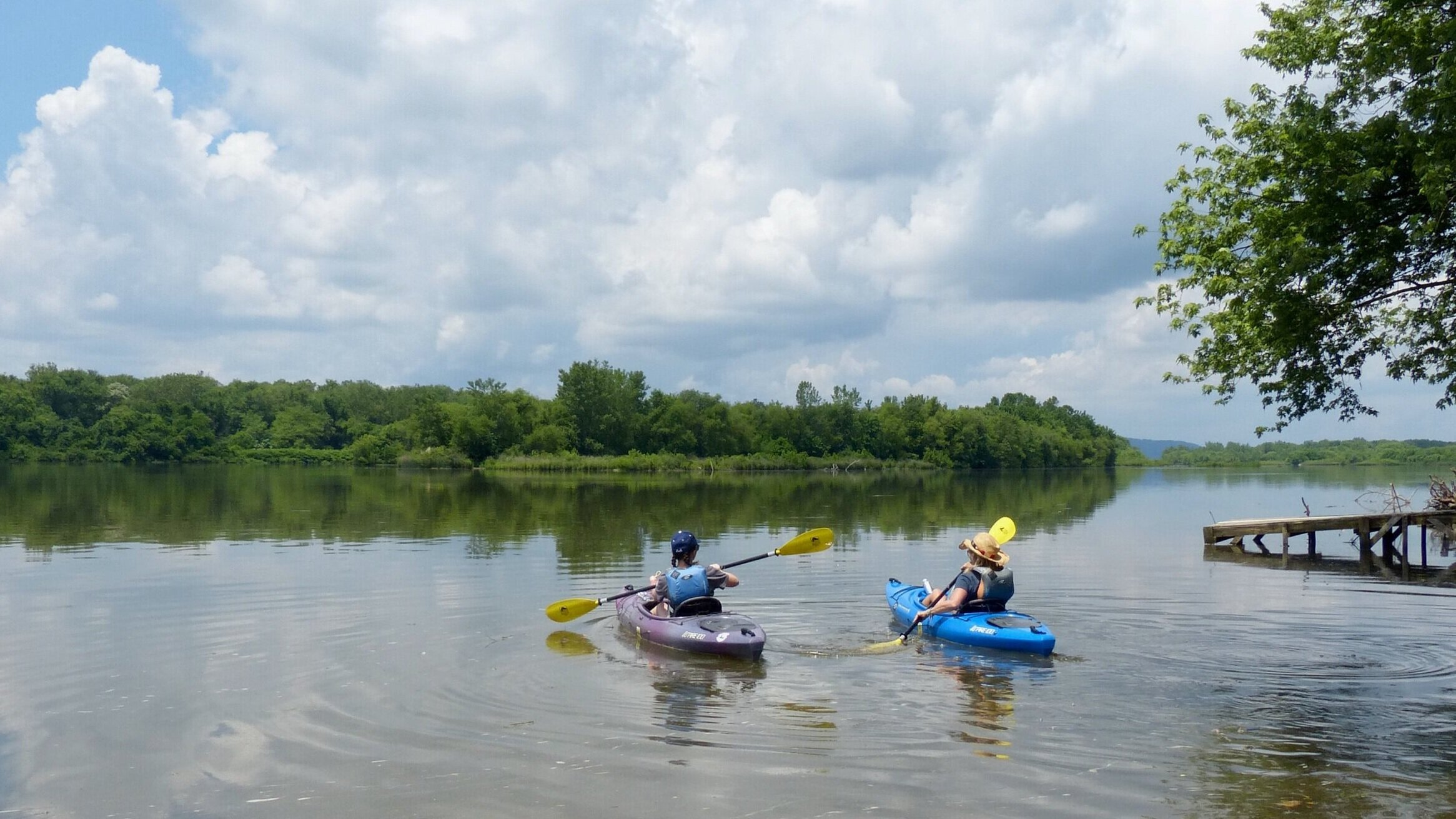
Conejohela Flats
Kayaking the Lower Susquehanna River
by Teresa Maier
Welcome to your kayak rental adventure on the Lower Susquehanna River! The Susquehanna River meanders 444 miles from near Cooperstown, New York, until it empties into the Chesapeake Bay in Maryland. Scientists consider it one of the oldest rivers in the world, older even than the mountains through which it flows.
Conejohela Flats
This collection of low-lying islands and exposed mud flats is known as the Conejohela Flats. Prior to the 20th century, this area was a marshy floodplain that flooded annually in the spring. In 1931, the building of the Safe Harbor dam five miles downriver radically changed the landscape, flooding most of the valley and leaving only the few remaining islands. Today the water level in the Flats is regulated by the operation of the dam.
Birds
Well known in birding circles, the Flats are recognized by the Audubon Society as an Important Bird Area. Over 250 species of birds have been identified in the Flats. There are several Bald Eagle nests on the islands and large flocks of Snow Geese and Tundra Swans can be found in the river here in late winter. The Flats provide migrating shorebirds with a crucial stopover during spring and fall migrations. This area hosts around 17,000 shorebirds annually as they make their way from breeding grounds in Arctic Canada and Alaska to winter ranges on the Gulf Coast and in Central and South America. A total of 37 shorebird species have been recorded in the Flats.
Eagles
Bald Eagles are a common sight while kayaking on the Susquehanna River. Eagles stand 31-37 inches tall with a wingspan up to 7 feet. They have pure white heads and tails that contrast with their dark brown bodies. Eagles are often seen soaring and gliding in circles as they search for prey, as well as resting on river rocks or in trees. They are distinguished from the similar-looking turkey vulture by their large heads, long wings held straight out, and smooth (not teetering) flight.
Herons
Stalking the shallows or perched in the trees, Great Blue Herons are hard to miss. Tall and blueish gray, they measure 42-52 inches with a wingspan up to 6 feet. They have a an S-shaped neck, long yellow bill and a wide dark stripe above their eyes. In flight they have very slow wingbeats, a tucked in neck, and legs trailing out behind. Herons will often bark or grunt when disturbed.
Egrets
Great Egrets are tall and stately birds, similar to herons, but slightly smaller. Standing 38 inches tall, their wingspan is up to 4 1/2 feet. They are all white with a long, yellow bill, and black legs. Egrets have a long S-curved neck that tucks back against their shoulders in flight. They hunt in the shallows and nest in the trees.
Susquehannock Indians
The last of the Native American tribes to live in this area were the Susquehannocks. They lived in large fortified towns along the Susquehanna River and controlled much of the fur trade in the area for nearly a century. Susquehannock settlements near today’s Washington Boro were home to an estimated 2000 people in the early 1600s.
Penn’s New Philadelphia
William Penn reserved a 3000 acre site here at the end of Blue Rock Road, just upriver from Turkey Hill, for the location of his “New Philadelphia”. This was to be a large city, ideally situated on trade routes and the river. This location was considered the first gateway to the west. Unfortunately for Penn’s plans, the river between here and Port Deposit, Maryland proved not navigable, and the city was never built.
Cresap’s War
Complicated and contradictory land grants to the Pennsylvania and Maryland colonies led to a decades long border dispute in the late 1600s and early 1700s. In 1730 the dispute erupted into violence along this stretch of the Susquehanna, mostly surrounding the actions of Thomas Cresap, a land agent for Maryland’s founding family, the Calverts. This was the location of a ferry crossing and Cresap had a house directly across the river. Eight years of violent raids, the calling out of the militias of both Maryland and Pennsylvania, and murder charges for Cresap ended in a peace treaty in 1738. The marking of the Mason Dixon line in 1767 brought a final end to the dispute.
Red Caboose
The red caboose that can seen from the Flats sits alongside the Enola Low Grade Rail Trail. It is caboose 23832, built in 1947 and painted in the traditional Pennsylvania Railroad paint scheme.
